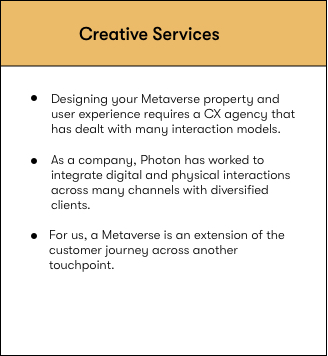Synopsis
Mastering the Message: A Guide to Powerful Executive Communication presents a practical framework—the 5Cs: Connection, Clarity, Concise, Compelling, and Consistency—to help leaders communicate more effectively in today’s remote and hybrid work environments. The article addresses common misconceptions and challenges, using real-world examples from Apple, Amazon, Google, Microsoft, and Netflix to illustrate how strong executive communication drives alignment, trust, and strategic impact across organizations.
Introduction
In today’s era of remote and hybrid work, effective communication is no longer just a soft skill—it’s a strategic imperative. As teams become more distributed and workplace dynamics evolve, strong communication practices are essential to bridge the gaps once filled by in-person interactions. At the heart of this shift lies executive communication: the deliberate, high-impact exchange of information between senior leaders and internal or external stakeholders.
Whether you're an aspiring manager or a seasoned executive, mastering this discipline is essential. Executive communication empowers leaders to articulate organizational goals, foster transparency, align teams with the company’s vision, and cultivate a unified culture. In today’s business environment, technical acumen alone is not enough. Modern leaders must possess the emotional intelligence and communication finesse needed to inspire teams, build credibility, and influence stakeholders—from direct reports and peers to board members and the C-suite.
This guide explores common misconceptions and communication challenges, offering a practical framework: The 5Cs of Powerful Executive Communication. With real-world examples and actionable strategies, it’s designed to help you communicate with clarity, confidence, and impact.
Common Misconceptions
Even seasoned professionals can hold mistaken beliefs about executive communication. Here are two we frequently encounter:
1. “Executive communication is only for PR or communications professionals.”
This is especially common among technical and operational leaders. While communications professionals are trained in crafting messages, every leader must develop the ability to communicate clearly and persuasively.
Take engineering teams in digital departments of financial institutions: these professionals don’t just build systems—they explain complex solutions to executives. Their ability to translate complexity into compelling narratives often determines whether projects receive support and funding.
2. “It’s only about verbal communication.”
Far from it. Executive communication is about connecting with your audience—whether via presentations, written updates, or one-on-one conversations. The goal is to ensure your message resonates and drives action. This includes simplifying content, delivering key takeaways, and fostering dialogue through questions and feedback.
Top Challenges—and How to Solve Them with the 5Cs
Effective executive communication doesn’t happen by accident. It requires structure, intentionality, and alignment. Below are five common pitfalls—and how to solve them using the 5Cs Framework.
1. Lack of Clear Ownership
Challenge: Executive communication often falls into a gray area, resulting in last-minute scrambling or inconsistent messaging.
Solution – CONNECTION: Assign a clear owner to gather input, shape the narrative, and align stakeholders. This ensures cohesive, thoughtful communication.
Case Study: Apple’s Product Launch Planning
At Apple, each project has a “Directly Responsible Individual” (DRI). This principle—applied to communication as well—ensures that a single accountable leader owns the message and coordinates feedback across teams. As a result, product announcements and executive messaging are consistently well-aligned and highly effective.
Lesson: When ownership is clearly defined, communication becomes more strategic and streamlined. Align early, check in often, and reflect afterward to continuously improve.
2. One-Size-Fits-All Messaging
Challenge: Messages created for broad audiences tend to lose impact.
Solution – CLARITY: Tailor messages to specific audiences. Technical stakeholders want data; creative teams prefer visual storytelling. Know your audience—and adjust your approach.
Case Study: Amazon’s Internal Memos
Amazon is famous for using narrative memos instead of slide decks in meetings. These six-page memos are tailored to executive audiences and include clear context, data-backed arguments, and expected outcomes. The clarity and thoughtfulness behind them increase alignment and reduce miscommunication.
Lesson: Don’t just explain what’s happening—clarify why it matters. Contextualize your message to drive informed decisions.
3. Information Overload
Challenge: Overly detailed content can overwhelm executive audiences and obscure the main message.
Solution – CONCISE: Use executive summaries, visuals, and focused messaging. Aim to deliver your core idea in under a minute.
Case Study: Google’s “One-Pager” Culture
At Google, executives often rely on tightly structured one-pagers that distill complex initiatives into clear summaries. These documents highlight problem statements, user impact, data insights, and key recommendations. This format helps teams stay focused, enabling quick decision-making and reducing cognitive load for senior leaders.
Lesson: Prioritize clarity over comprehensiveness. A well-structured summary can make the difference between approval and delay.
4. Lack of Forward-Looking Insight
Challenge: Communications often stop at status updates, missing the chance to drive decisions or inspire future actions.
Solution – COMPELLING: Every message should include these critical details:
- Key Insights – What did we learn?
- Actions – What are we doing?
- Roadmap – What’s next?
Case Study: Microsoft’s Shift to a Growth Mindset
Under Satya Nadella’s leadership, Microsoft adopted a new style of executive communication emphasizing learning, next steps, and forward vision. For example, leadership updates now routinely include insight-driven reflections and future-focused planning. This change helped shift Microsoft’s culture and market perception.
Lesson: A compelling message connects the dots. By linking insight to action and vision, leaders inspire confidence and strategic momentum.
5. Inconsistent Formats and Style
Challenge: Different formats across teams lead to confusion and inefficiency.
Solution – CONSISTENCY: Use standardized templates (e.g., wins, blockers, roadmap, asks). Familiar formats make it easier for executives to digest information quickly and foster trust over time.
Netflix became famous for its “culture deck,” but its internal communications extend that clarity with regular, well-structured strategy memos shared across teams. These documents consistently follow a format: context, priorities, ownership, and expected impact. This internal discipline strengthens alignment while reinforcing their transparent culture.
Lesson: Leaders who adopt consistent formats build trust and reduce friction. Familiar frameworks improve comprehension—and decision speed.
Conclusion: Lead by Message, Not Just by Mandate
Great executive communication isn’t about saying more—it’s about saying the right things, in the right way, to the right audience. Whether you're pitching a project, reporting on progress, or articulating a vision, your ability to communicate effectively is a multiplier for trust, engagement, and performance.
By applying the 5Cs—Connection, Clarity, Concise, Compelling, and Consistency, and drawing inspiration from the playbooks of companies like Apple, Amazon, Microsoft, Google, and Netflix, you can elevate your executive presence and unlock strategic value.
The most successful organizations understand that communication is not just about transmitting information—it’s about creating alignment, fostering momentum, and building credibility from the top down. By mastering the message, you’re not just informing teams—you’re enabling clarity, accelerating execution, and shaping culture.











